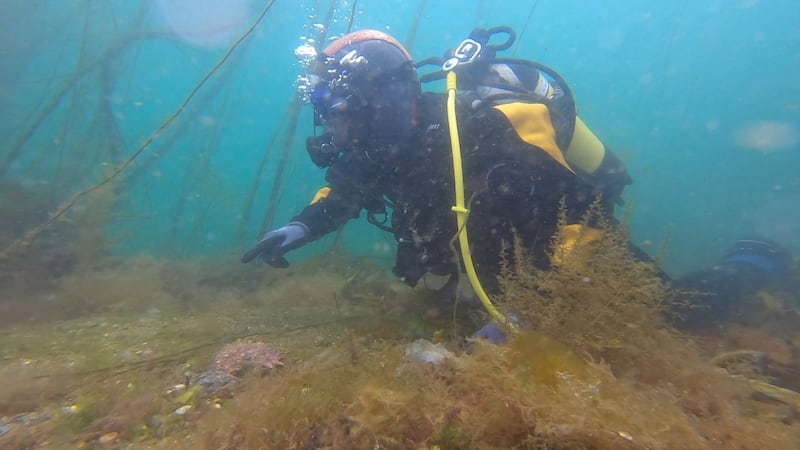I had been quite blasé about upskilling my scuba diving to the level where I would be qualified to dive for a Spanish armada wreck. So it was the combination of a lot of little things going wrong simultaneously, rather than one single big thing, that gave me a rude wake-up call.
I was on a training exercise in a water-filled former quarry in Tipperary when I found myself with a face mask full of blood, having run out of air, ascending uncontrollably past the decompression stop I needed to avoid getting the bends.
“Well, if you wanted a challenge, Philip, get yourself out of this one,” I thought, cursing my stupidity.
How did I get into this mess? My interest in the ship named the Falcon Blanco and the 430-year-old mystery of its whereabouts began at a party. There, I heard a story of a diver in his 80s who claimed that 50 years ago he had found the wreck of a Spanish armada galleon that was supposed to have been laden with treasure.
It was the kind of story non-credulous journalists are supposed to smile at politely and move on. But for any number of reasons I have ended up spending countless hours in museums, archives, geological surveys, knocking on doors on Inishbofin island, and ultimately scouring the bottom of the sea. Why?
The Spanish armada is already a heady cocktail of ill-fated escapade, religious war and sunken treasure. But this story had an added element of mystery.
A civil servant had commissioned four divers to search for a wreck that he had made a lifetime study of. They did his bidding and reported back only disappointing traces of a possible unidentified wreck. I tracked down the boatman who had taken them out. He confided in me his certain belief they had found something far more significant than they were letting on.

If the lure of sunken treasure wasn’t enough for the little boy still lurking inside most middle-aged men, there were plenty of real journalistic questions. Why, for instance, did the dive leader, who admitted to me that he had found a Spanish-designed anchor, make no mention of it in his dive log book? He recorded weather, tides, current and how many lobsters they saw, but made no mention of finding what they were looking for.
The other attraction to this story was that it allowed me to experiment with a very different form of radio story telling – long-form narrative. Treasure Island is told as it happens, and it is still unfolding. The final two episodes have yet to be made. The listener learns a little about how journalism works from the inside of a story: the mistakes, the pages torn from the notebook, the eureka moments, and my surprise at several very unexpected plot twists
If to podcast fans this sounds a lot like the hit American series Serial, then I have to put my hand up straight away. That was a reinvestigation of a 15-year-old murder; this is four centuries older.
But several stylistic elements – the cliffhangers at the end of each episode, the telling of the story as it unfolds, and not having a clue where it is going to end up – are borrowed from Serial.
The series is also a love letter to journalism. It is the only career I have had and I love it, but in this country our hands are tied by very restrictive libel laws. By chasing a story that is 430 years old there was little fear, for a change, of getting tied up in solicitors’ letters.
Treasure Island is an example of how far investigative journalism can go, of the kind of storytelling it could deliver if our access to information weren’t so restricted.
Back at the bottom of that quarry in Tipperary I was in trouble. The blood in my mask had come from a nose bleed I gave myself trying to equalise the pressure in my ears. Even when cleared it still partially obscured my sight of the air dump valve on my dry suit, so I couldn’t see it was accidentally locked. Which meant that the air in my suit was trapped as I ascended it expanded, causing me to go up even more quickly.

I needed to make a three-minute decompression stop to avoid getting the bends. I started turning somersaults to move the air around my suit to a different vent. All of this activity meant that I was gulping through the air in my tank far too quickly.
I stuck my finger in the sleeve of the suit to let the trapped air out, finally stopping my uncontrolled ascent at five metres. But when I looked to my air gauge I could see that there was so little left I had to all intents and purposes run out with three minutes of dive time remaining.
What happened next? Well, that’s a cliffhanger answered at the start of episode four.
Episode 1 of Treasure Island: The hunt for the Falcon Blanco will be broadcast in Drivetime on RTÉ Radio 1 on Wednesday at 6.30pm. The first four episodes will be available for podcast binge on the same date on iTunes and Spotify


















